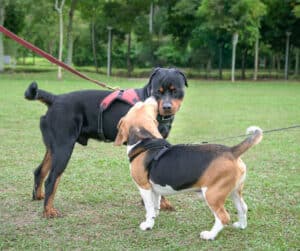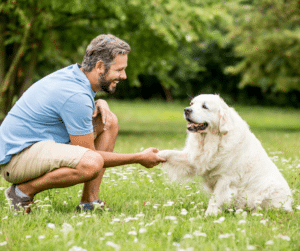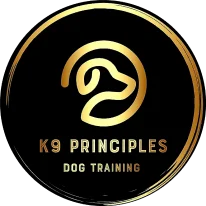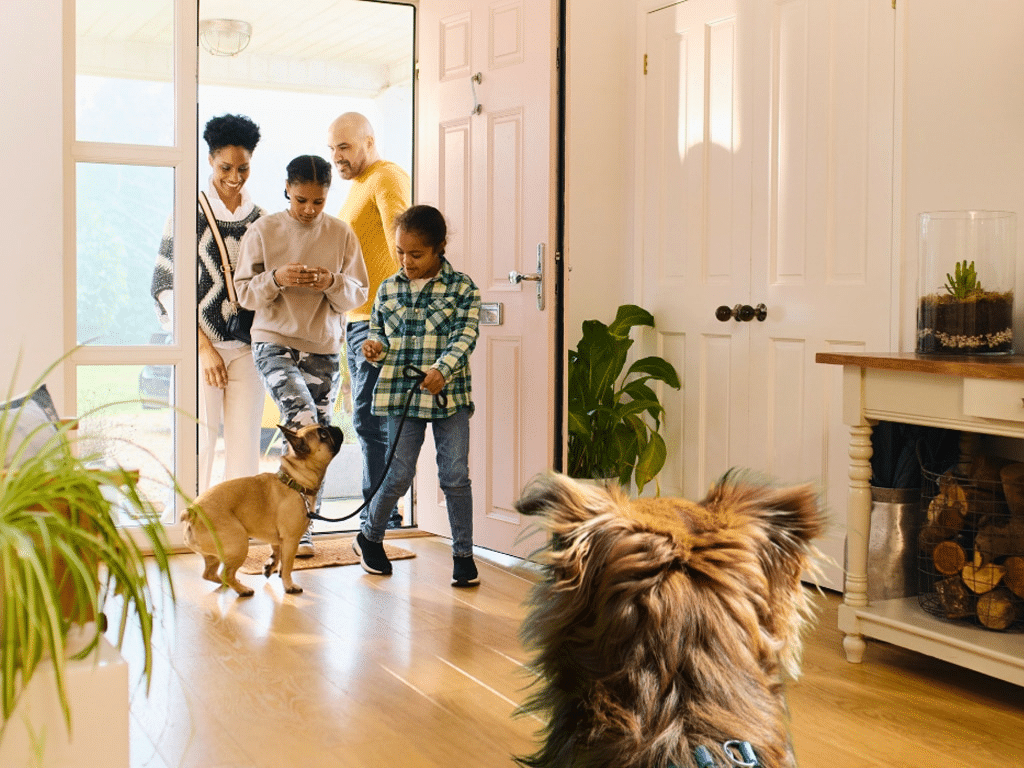Bringing a new dog into a multi-dog household can be both exciting and challenging. To ensure a smooth transition and harmonious coexistence, it’s crucial to take a thoughtful approach that addresses the needs of both the new dog and the existing dogs in your home.
Here are comprehensive tips to guide you through this process.
Understanding the Needs of Existing Dogs
When introducing a new puppy into a home with an older dog, it’s crucial to consider how your existing dog will react. While some aging dogs enjoy the company and playfulness of a young pup, others may find it overwhelming. A younger dog’s high energy might be the last thing an older dog needs, leading to stress, aggression, or withdrawal.
Forcing your existing dog to become “friends” can cause tension in the household. To prevent this, use barriers or baby gates to give your older dog space and control over their interactions with the new dog. This slow and steady integration helps to ease stress and avoid conflict.
It’s essential to remember that while you know the new dog is here to stay, your existing dog didn’t get a vote. Some dogs prefer being the only dog, and adding another could disrupt the peace. Always consider the needs and preferences of your current dogs. Behaviourally or emotionally sensitive dogs may need more time and gradual introductions to adapt to the new family member. A well-matched addition to the home will significantly reduce the risk of conflict and ensure a harmonious multi-dog household.
The First Meeting
 The initial meeting between the new dog and the existing dog sets the tone for their relationship. Find a neutral location to reduce territorial behaviour, such as a park or open space. Keep both dogs on leashes and allow them to approach each other slowly. Avoid forcing interactions or overwhelming them. Reward positive behaviour with treats and praise to create a positive association. This approach helps build trust and reduces stress.
The initial meeting between the new dog and the existing dog sets the tone for their relationship. Find a neutral location to reduce territorial behaviour, such as a park or open space. Keep both dogs on leashes and allow them to approach each other slowly. Avoid forcing interactions or overwhelming them. Reward positive behaviour with treats and praise to create a positive association. This approach helps build trust and reduces stress.
Feeding Time Management
Feeding time can be a source of tension in a multi-dog household. To prevent conflicts, feed the dogs in separate areas or at different times. This reduces competition and resource guarding. Use barriers, baby gates or crates to create a clear division between feeding spaces. If feeding in separate rooms, ensure each dog has their own space and supervise to avoid issues.
Multi-dog Walks
Walking multiple dogs together can be challenging. It’s best to start with separate walks to establish control and build individual relationships. As they become more comfortable, you can introduce group walks. Walking individually helps with training and ensures each dog receives the attention they need.
Individual Training Time
 Training each dog individually is crucial for maintaining harmony in a multi-dog household. It allows you to build a strong relationship with each dog, teaching them new skills and reinforcing positive behaviour. Set aside time for one-on-one training sessions, where you can focus solely on one dog at a time. Use positive reinforcement, such as treats and praise, to encourage good behaviour. Meanwhile, keep your other dog occupied with a chew toy or a stuffed Kong to prevent jealousy or distraction.
Training each dog individually is crucial for maintaining harmony in a multi-dog household. It allows you to build a strong relationship with each dog, teaching them new skills and reinforcing positive behaviour. Set aside time for one-on-one training sessions, where you can focus solely on one dog at a time. Use positive reinforcement, such as treats and praise, to encourage good behaviour. Meanwhile, keep your other dog occupied with a chew toy or a stuffed Kong to prevent jealousy or distraction.
Individual training time becomes even more critical if you’re dealing with behaviour problems like reactivity, fear, or aggression. By addressing these issues in a focused environment, you can work towards a calmer and more harmonious household.
Individual Play Time
Similarly, dedicate time to play with each dog individually. This not only strengthens your bond but also helps manage their energy levels and teaches impulse control. Integrate play into your training sessions to keep things fun and engaging. Structured one-on-one play is a great way to avoid conflicts between dogs, as they can become possessive over toys or get overly excited, leading to unwanted aggression.
Avoid playing fetch with multiple dogs chasing the same ball, as this can provoke resource guarding or create so much excitement that it turns into a fight. Instead, opt for individual play sessions where you can control the environment and ensure a positive experience for each dog.
By incorporating individual training and playtime into your routine, you create a balanced environment where each dog receives the attention they need. This approach helps foster positive relationships between you and your dogs, reducing the likelihood of conflicts and promoting a harmonious multi-dog household.
Supervision and Separation
 To maintain harmony in a multi-dog household, supervision and separation are crucial. When introducing a new dog, supervision helps prevent conflicts and ensures a smooth transition. It’s important to closely monitor interactions during feeding, playtime, and high-arousal situations like getting ready for a walk. Supervision allows you to intervene if necessary to prevent conflicts from escalating.
To maintain harmony in a multi-dog household, supervision and separation are crucial. When introducing a new dog, supervision helps prevent conflicts and ensures a smooth transition. It’s important to closely monitor interactions during feeding, playtime, and high-arousal situations like getting ready for a walk. Supervision allows you to intervene if necessary to prevent conflicts from escalating.
Separation is another key strategy for avoiding conflicts. When you need to leave the house or go to work, it’s best to keep the dogs separated to avoid potential conflicts. You can crate one or all dogs if they are comfortable with it, or use baby gates to create distinct spaces. Separation during alone time provides peace of mind and ensures the safety of your dogs. By following these supervision and separation strategies, you can create a balanced and harmonious environment in your multi-dog household.
Dealing with Behavioural Issues
If you notice aggressive behaviour or significant tension, address it immediately. Separate the dogs and give them time to calm down before reintroducing them. Early intervention is crucial to prevent more serious issues from developing. Consistency and patience are key when dealing with behavioural problems. For personalised guidance on addressing behavioural concerns in your multi-dog household, you can contact us to schedule a private training session where we come to you and work in your house. We’re here to help you understand and resolve any behavioural concerns in your multi-dog household.
Be aware of Conflict-prone Areas
 Conflict-prone areas are places or situations in a multi-dog household where tensions between dogs can escalate. These spots typically involve desirable resources, limited space, mismatched activities, or high-arousal moments. Potential conflict zones include narrow hallways, doorways, on furniture with you, and feeding areas. Desirable resources such as food, toys, or access to a person can also trigger competition.
Conflict-prone areas are places or situations in a multi-dog household where tensions between dogs can escalate. These spots typically involve desirable resources, limited space, mismatched activities, or high-arousal moments. Potential conflict zones include narrow hallways, doorways, on furniture with you, and feeding areas. Desirable resources such as food, toys, or access to a person can also trigger competition.
To prevent conflicts, be conscious and watchful during these situations. Monitor high-arousal moments like feeding time, playtime, or getting ready for a walk, as these can create excitement that leads to disputes. If one dog is resting while another wants to play, this mismatch in activity can also become a source of tension. To mitigate conflicts, take proactive measures such as supervising interactions, separating dogs when necessary, and ensuring each dog has access to their own resources and space.
In Conclusion
Integrating a new dog into a multi-dog household requires careful planning, understanding, and ongoing management. Transitions can be challenging, so patience is essential. Allow both dogs time to adjust and avoid forcing interactions. Consistent routines and ongoing supervision help maintain harmony in the household. Reward positive behaviour and maintain a calm atmosphere to ease the transition. Give each dog the attention they need to feel secure and valued.
By following these tips and maintaining a positive attitude, you can create a harmonious environment where all dogs thrive. Remember to take your time, be patient, and contact us if you are seeing issues develop that you are unsure of as ignoring them will only make it worse.
- Name: K9 Principles
- Address: Haldimand County, Greater Hamilton Area, Burlington and Most of Norfolk County
- Phone: 289 880-3382
- Email: k9principlesinc@gmail.com
- Website: www.k9principles.ca
FAQs
-
Consider your lifestyle, living space, and activity level. Choose a breed whose energy levels and size are compatible with your own circumstances. Research different breeds, consult breed-specific literature, and speak with experienced owners and professionals to understand each breed’s needs and characteristics.



